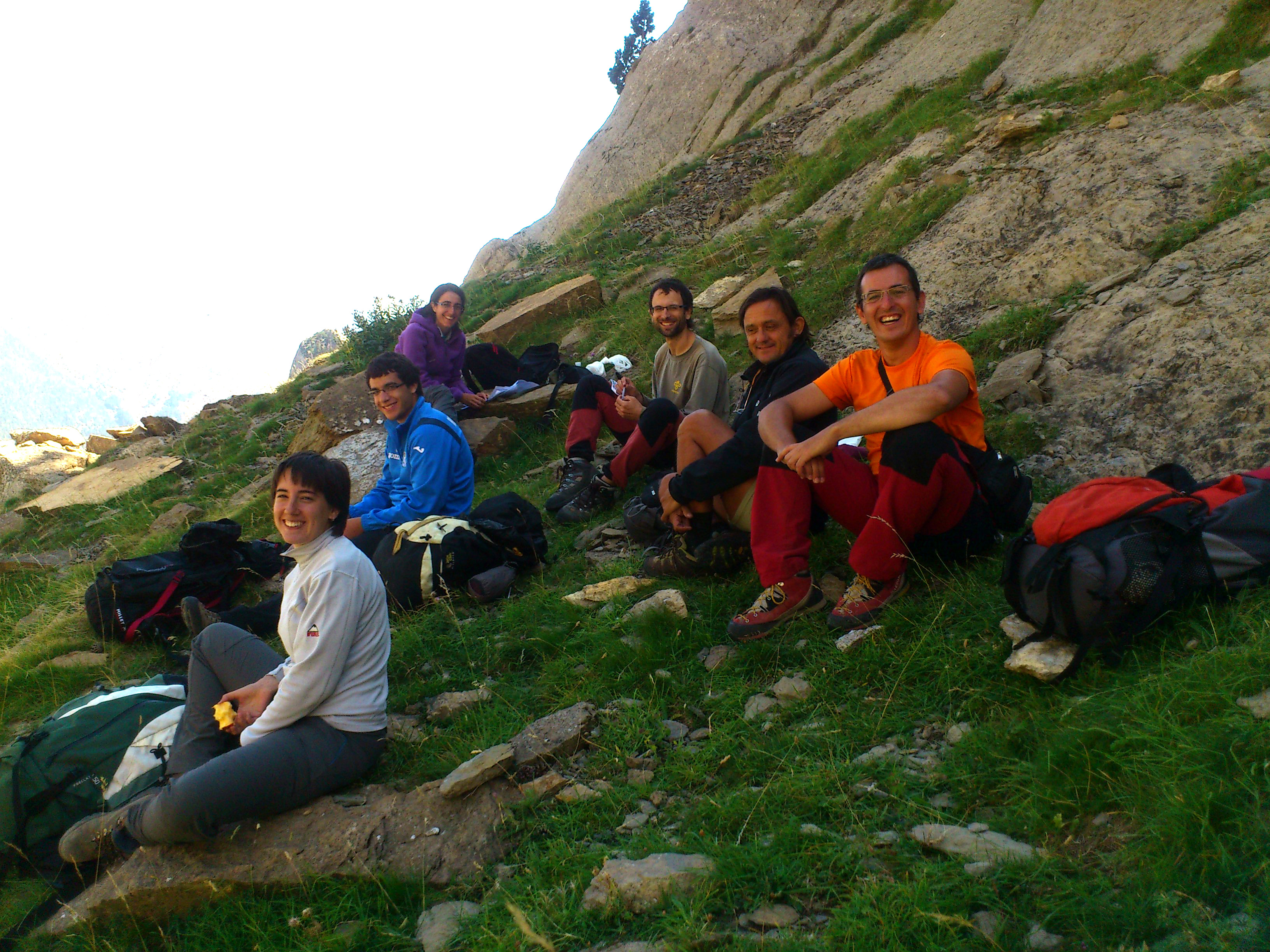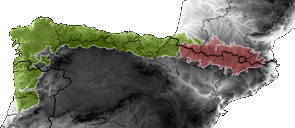Between the 27th August and the 5th September I have been involved in a seed collecting trip on the Spanish side of the Pyrenees with the team from the Botany Department of the “Sociedad de Ciencias Aranzadi” (San Sebastián). They manage the Basque Country Seed Bank. The team was formed of two botanists and two biology students. During the last two days, we were joined by three botanists from the Jardín Botánico Atlántico (Gijón) and the Jardín Botánico de Olarizu (Vitoria).
The Pyrenees contains one of the highest levels of plant diversity in Europe (4,000-4,500 species) due to the complexity of the mountain range with a high altitudinal gradient and a diverse range of climates, geology and ecosystems. Around 200 plant taxa are endemic to the Pyrenees.
The aim of this field trip was to collect seeds of target endemic species and structural species of habitats of community interest and to collect population data that would help with monitoring their conservation status.
 We collected 83 taxa, most of them endemic taxa to the Pyrenees and to the Pyrenees-Cantabrian region. 40 of the taxa are new collections for the Millennium Seed Bank. The seeds were collected following the ENSCONET protocol and associated data, herbarium vouchers and photos were gathered for each seed collection. The preliminary field work done to locate the plant populations and to check the phenological status of the populations was key to maximising the seed collecting.
We collected 83 taxa, most of them endemic taxa to the Pyrenees and to the Pyrenees-Cantabrian region. 40 of the taxa are new collections for the Millennium Seed Bank. The seeds were collected following the ENSCONET protocol and associated data, herbarium vouchers and photos were gathered for each seed collection. The preliminary field work done to locate the plant populations and to check the phenological status of the populations was key to maximising the seed collecting.
I have been always fascinated by the plant diversity and endemicity of the Pyrenees. Collecting seeds of so many different plants is a very enriching and interesting experience. I have had the opportunity to observe, learn, understand and share with other botanists the diversity of reproductive and seed dispersion strategies that high mountain plants have.
Some of the target species populations are located at high altitude and several hours of trekking were required to reach them. Once arrived, we were a very efficient group of seed collectors. For each taxa we decided beforehand to adopt the most effective seed collecting strategy.
In the first week we collected in the Navarra region. We spent four days collecting in the Pikatua, Lakora, LaKartxela and Ori mountains.
The first four days we were working in a thick fog, which unfortunately obscured the beautiful views of the landscape. It was much cooler than we expected, however with warm jackets and high spirits we manage to make some good collections.
For example, we made good collections of several endemic plants such as Teucrium pyrenaica, Onobrychis pyrenaica and Petrocoptis hispanica.
Collecting Petrocoptis hispanica requieres a lot of patience and concentration. It was almost a meditation experience, as we collected the capsules one by one from small plants growing in the cracks of the rocks. Most of them were empty so we needed to select those with at least one seed or if we were lucky with more than two black tiny seeds.
We also tried to collect the endemic Viola cornuta, but we could not find enough fruits. It seems this plant disperses its seeds very quickly. After looking carefully in the area where the population was, we gave up and decided to leave it for next year as we only found one beautiful capsule ready to be collected.
During the second week we were collecting in the Aragon region in the “Petraficha” mountain pass and in different parts of Alanos peaks. Fortunately, it was sunny and warm, so seed collecting was thankfully much easier. We collected seeds of several endemic taxa like Galium cespitosum, Galium pyrenaicum and Lilium pyrenaicum. Collecting Galium cespitosum took some time but we were a very good group of seed collectors and within one hour we made a good collection and were ready to keep walking and collecting.
Almost every day we were visited by a pair of Bearded Vultures (Gypaetus barbatus) during our lunch break. They were probably flying over our heads the whole time but we were so focused on seed collecting that we did not realise they where there until we sat down on a rock and began looking at the landscape while we ate our yummy sandwiches.
Every evening when we came back to the hostel we spent some time processing the herbarium vouchers and taking care of the seed collections (post-harvest handling). Due to the fog of the first few days the seeds were completely soaked and there was a high risk of deterioration through ageing or mould. Drying them was an urgent task.
Halfway through our trip we had a meeting at the Instituto Pirenaico de Ecología (CSIC) in Jaca, who warmly hosted us. We discussed a project proposal to develop an “Ex-situ conservation programme in the North of Spain” including the Cantabrian range and the Pyrenees. It was a very fruitful meeting and once we successfully raise enough funds we will start its implementation, hopefully on time for the next seed collecting season.
Now staff members from “Sociedad de Ciencias Aranzadi” are busy cleaning the collected seeds and we are looking forward to receive the duplicates at the Millennium Seed Bank in the coming months.

Comments
La conservación endemichnyh de los tipos en la cultura.
A la noticia.
En el jardín botánico las ciudades Yakutsk (Rusia) de 10 años es cultivado con éxito endemik de los Pirineos - Fritillaria pyrenaica. Las plantas florecen y dan los frutos.
La dirección-
Yakut Botanical Garden affiliated to the Institute for Biological Problems of Cryolithozone SB RAS, ProspektLenina, 41, 677980 Yakutsk. E-mail: Prikhodko_la@mail.ru
Add new comment